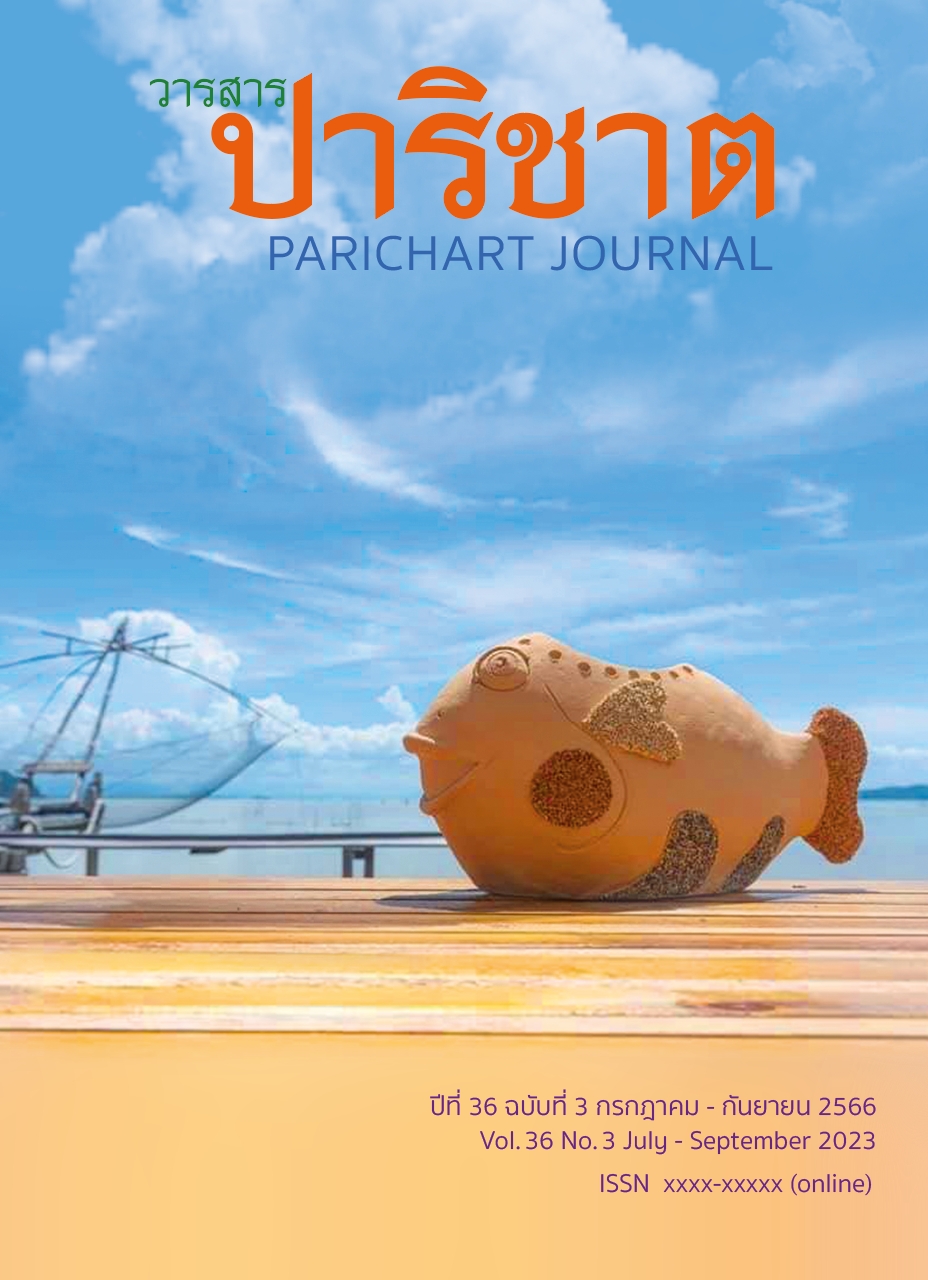The Survey and Analysis of Soil Suitable for Upgrading Pottery Products in Songkhla Lake Areas
Main Article Content
Abstract
The objectives of this study were to 1) survey and analyze the physical and chemical properties of soil suitable for upgrading pottery products and 2) determine potential soil sources for pottery making in the central Songkhla Lake areas. The research procedure included the survey of 200 sample spots and the study of the physical and chemical properties of soil using the potential surface analysis to determine spatial potential. The findings showed that 49 sample spots were distributed in Phatthalung Province and 151 spots in Songkhla
Province. The results of chemical and physical properties of soil revealed that pH values - alkalinity values were between 3 - 8, the average was about 5, the soil temperature was between 28 O C and 32O C, and the mean was 29.89 O C. The most common soil color found was 5Y (Yellow Red) with 53 secondary spots, followed by the color 10 YR (Yellow Red) with 45 spots while the least common color was the color 2.5YR (Yellow Red) with 1 spot. The average of the soil moisture was at 33.71 percent. The average of the soil shrinkage was at 10.034 millimeters. Concerning the low potential soil sources, they were 133 spots: 38 spots in Phatthalung Province and 95 spots in Songkhla Province. For the average potential soil sources, they involved 31 spots: 3 spots in Phatthalung Province and 28 spots in Songkhla Province. Regarding the high potential soil sources, they were 36 spots: 8 spots in Phatthalung Province and 28 spots in Songkhla Province.
Article Details

This work is licensed under a Creative Commons Attribution-NonCommercial-NoDerivatives 4.0 International License.
References
Land Development Department and the Institute of the Promotion of Teaching Science and Technology (IPST). (2012). Soil management and soil conservation handbook. Ministry of Agriculture and Cooperatives.
Sawatdichaikul, O. (2017). Pottery, ceramic and food. Food Journal 47(3). 14-19.
Land Development Department. (2007). Soil series database system. Retrieved May 12, 2021 from http://www.ldd.go.th/gisweb/soildata/main_soildata.html.
Centers for Disease Control and Prevention. (2018, August 22). Preventing HPV–associated cancers. https://www.cdc.gov/cancer/hpv/basic_info/prevention.htm
Asdecon Corporation Ltd. (1997). Soil mechanics foundation survey report of Vajiralongkorn – Tha Chin River waterway. Kasetsart University.
Land Development Regional office 12. (2004). The sage of land development. The Land Development Regional office 12, Land Development Department.
Land Development Department. (2021). World reference base for soil resources of Thailand. Soil Resources Survey and Research Division, Land Development Department.
Community Technology Bureau. (2012). Document for a workshop in the curriculum of “Testing and quality controlling local soil”. Community Technology Bureau, Department of Science Service (DSS), Ministry of Science and Technology.
Suppasityothin, O. (n.d.). Area potential analysis of Thung Ma Heaw for productivity efficiency using appropriate land use determination method.
Khunthon, S. (2003). Properties of clays used as raw materials in local pottery in North Eastern Thailand. Kasetsart University.
Bordeepong, S., Phansuke, P., & Sukolrat, A. (2019). Study of mineralogy, chemical composition and physical properties of clays from local pottery areas in Rongang Community, Pattani Province. Rachamangala Research Journal. 13(1), 17-29.


